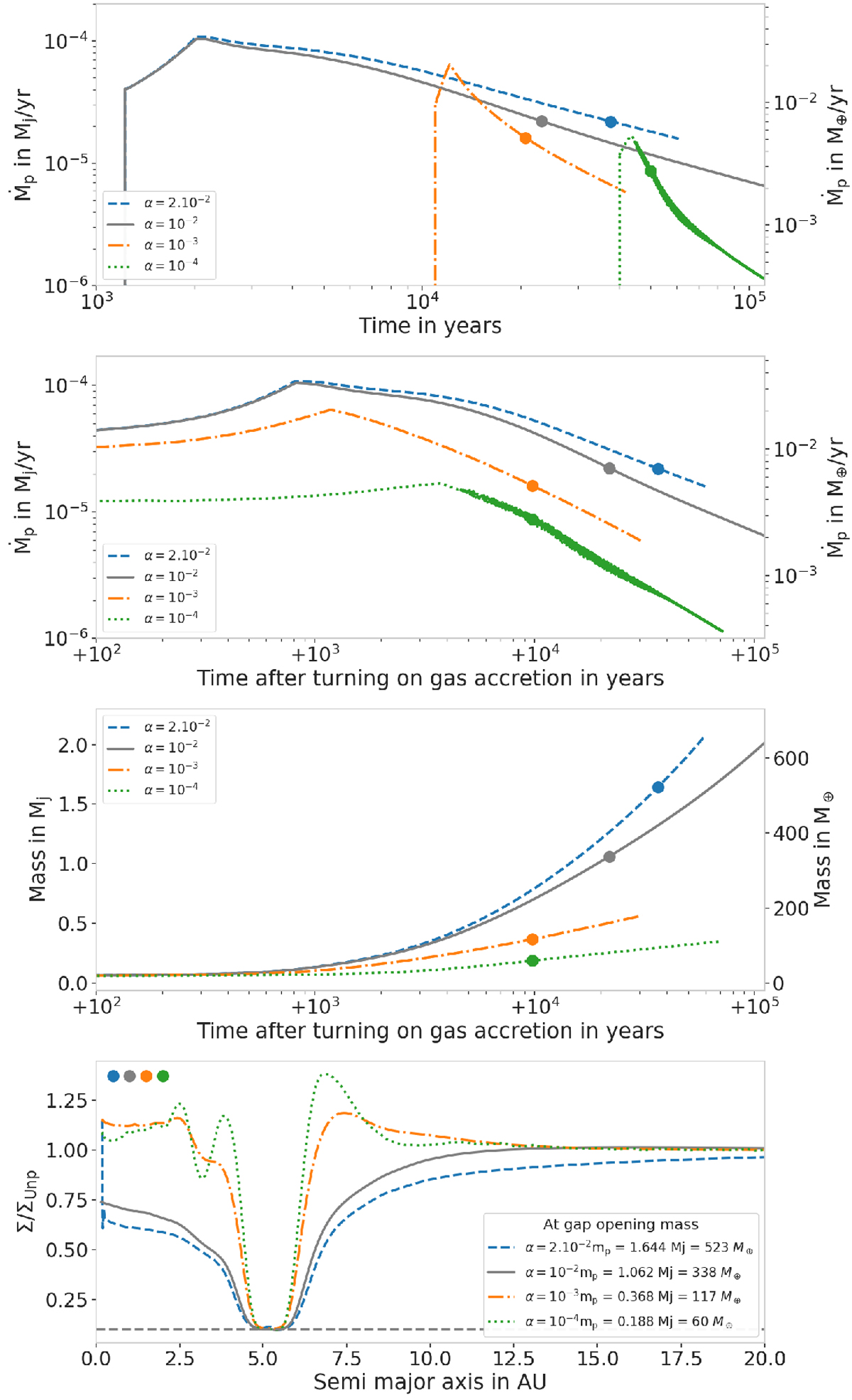Fig. 9

Influence of different viscosities for h = 0.05. Top: time evolution of the accretion rate onto the planet. As the time needed for the initial mass to reach an equilibrium is highly dependent on the viscosity, gas accretion starts later for lower viscosities. Middle 1: evolution of the accretion rates as a function of the time after gas accretion is turned on. As the viscosity is lowered, the Rossby Wave Instability is triggered: for α ≲ 10−4, vortices are formed and influence the planetary gas accretion rates, explaining the oscillations in the accretion rate curves. Middle 2: evolution of the planetary mass as a function of the time after gas accretion is turned on. The dots represent the time at which the gap-opening mass is reached. Bottom: perturbed surface density at the time where gap-opening mass is reached (dot on the other panels). The gap-opening mass is defined by the mass needed to reach Σ∕Σunp = 0.1 (Crida et al. 2006). It is represented here by the horizontal gray dashed line.
Current usage metrics show cumulative count of Article Views (full-text article views including HTML views, PDF and ePub downloads, according to the available data) and Abstracts Views on Vision4Press platform.
Data correspond to usage on the plateform after 2015. The current usage metrics is available 48-96 hours after online publication and is updated daily on week days.
Initial download of the metrics may take a while.


